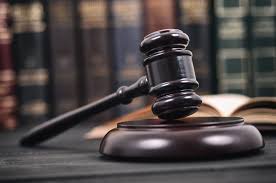Facing financial challenges can be an overwhelming experience, and for many individuals in Ohio, Chapter 7 bankruptcy becomes a viable solution to obtain a fresh start. In this comprehensive blog post, we will explore the intricacies of Chapter 7 bankruptcy in Ohio, providing valuable insights into the process, eligibility criteria, advantages, and considerations for those considering this financial route.
Understanding Chapter 7 Bankruptcy
a. **What is Chapter 7 Bankruptcy?**
Chapter 7 bankruptcy, also known as "liquidation" or "straight bankruptcy," is a legal process that allows individuals to discharge unsecured debts, providing them with a financial clean slate.
b. **How Does Chapter 7 Work?**
The process involves the liquidation of non-exempt assets to pay off creditors. Remaining eligible debts are then discharged, relieving the individual from the legal obligation to repay them.
Eligibility for Chapter 7 Bankruptcy in Ohio
a. **Means Test:**
Ohio residents must pass the means test to qualify for Chapter 7. This test compares the individual's income to the median income in Ohio, determining their eligibility.
b. **Credit Counseling Requirement:**
Before filing for Chapter 7, individuals must complete a credit counseling course from an approved agency.
c. **Exemptions in Ohio:**
Understanding Ohio's bankruptcy exemptions is crucial. Certain assets, such as a portion of home equity, personal property, and retirement accounts, may be exempt from liquidation.
The Chapter 7 Bankruptcy Process
a. **Filing the Petition:**
Initiating the Chapter 7 process involves filing a petition with the bankruptcy court. The individual must provide detailed financial information, including income, expenses, assets, and liabilities.
b. **Automatic Stay:**
Upon filing, an automatic stay is enacted, preventing creditors from pursuing collection activities, including wage garnishment or foreclosure.
c. **Appointment of a Trustee:**
A bankruptcy trustee is appointed to oversee the case. Their role includes reviewing the petition, conducting the meeting of creditors, and overseeing the liquidation process.
d. **Meeting of Creditors:**
The debtor must attend a meeting with the creditors, providing an opportunity for the trustee and creditors to ask questions about the individual's financial situation.
e. **Asset Liquidation:**
Non-exempt assets are liquidated, and the proceeds are distributed to creditors. However, Ohio's exemptions often protect essential assets, allowing debtors to retain a significant portion of their property.
f. **Debt Discharge:**
After the completion of the process, eligible debts are discharged, providing the debtor with relief from most unsecured obligations.
Advantages of Chapter 7 Bankruptcy
a. **Quick Debt Relief:**
Chapter 7 bankruptcy offers a relatively swift process, allowing individuals to discharge eligible debts within a few months.
b. **Fresh Financial Start:**
By discharging unsecured debts, Chapter 7 provides a fresh financial start, enabling individuals to rebuild their financial lives.
c. **Protection from Creditors:**
The automatic stay prevents creditors from pursuing collection actions, providing immediate relief to individuals facing financial challenges.
d. **No Repayment Plan:**
Unlike Chapter 13 bankruptcy, Chapter 7 does not require a repayment plan. Once eligible debts are discharged, there is no further obligation to repay.
Considerations and Challenges
a. **Impact on Credit Score:**
While Chapter 7 provides debt relief, it can have a negative impact on the individual's credit score, making it essential to consider the long-term implications.
b. **Asset Liquidation:**
The liquidation of non-exempt assets may be a concern for individuals with valuable property. Understanding Ohio's exemptions is crucial in protecting essential assets.
c. **Excluded Debts:**
Certain debts, such as student loans, child support, and some tax obligations, may not be dischargeable through Chapter 7.
Life After Chapter 7 Bankruptcy
a. **Rebuilding Credit:**
Post-bankruptcy, individuals can take steps to rebuild their credit, such as obtaining secured credit cards and making timely payments.
b. **Financial Education:**
Many individuals find value in financial education courses to enhance their money management skills and prevent future financial challenges.
c. **Monitoring Credit Reports:**
Regularly monitoring credit reports is crucial to ensure accuracy and address any discrepancies post-bankruptcy.
Consultation with a Bankruptcy Attorney
a. **Importance of Legal Guidance:**
Seeking the counsel of a qualified bankruptcy attorney in Ohio is crucial for navigating the complexities of Chapter 7. An attorney can provide personalized advice, guide individuals through the process, and ensure compliance with legal requirements.
b. **Initial Consultation:**
Individuals considering Chapter 7 are encouraged to schedule an initial consultation with a bankruptcy attorney. This meeting allows the attorney to assess the individual's financial situation and provide tailored guidance.
Frequently Asked Questions About Chapter 7 Bankruptcy in Ohio
a. **How Long Does Chapter 7 Bankruptcy Take?**
The process typically takes about three to six months from filing to debt discharge.
b. **Can I Keep My Home in Chapter 7 Bankruptcy?**
Ohio's homestead exemption may allow individuals to keep a certain amount of home equity, protecting their primary residence in many cases.
c. **What Debts Can Be Discharged?**
Most unsecured debts, such as credit card debt and medical bills, can be discharged. However, certain debts, like student loans and recent tax obligations, may not be eligible.
d. **Can I File for Chapter 7 Bankruptcy Again?**
Individuals can file for
Chapter 7 again, but there are specific time limits between filings.
Conclusion:
Chapter 7 bankruptcy in Ohio serves as a financial lifeline for individuals facing overwhelming debt. Understanding the process, eligibility criteria, and potential challenges is essential for making informed decisions. While Chapter 7 involves certain complexities, it is a powerful tool for obtaining relief and embarking on a journey toward financial recovery. With the guidance of a knowledgeable bankruptcy attorney and a clear understanding of Ohio's bankruptcy laws, individuals can navigate the process with confidence, paving the way for a brighter financial future.


No comments yet